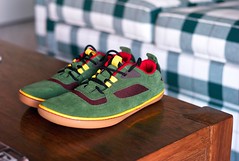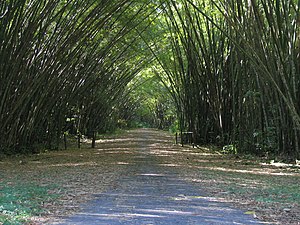 Image by Maggie Osterberg via FlickrBy Indy M
Image by Maggie Osterberg via FlickrBy Indy MThe world is made up of many things, big and small. And they all have their part to play in the grand scheme of things. The Buddhist philosophy considers even the smallest living creatures, like a flower or an ant, to be intimately connected to the greater world. However, the harmony and grace which animals provide to the beautiful outdoors is now being harmed.
Various industries are now consuming resources at an alarming rate. A rate at which many believe is unsustainable. This is where ethical shoes come into the picture. Primarily a movement that was started by vegans, ethical shoes (or clothes for that matter) are items which are never sourced from animal products.
Additionally, production of such items revolve around sustainable practices with very limited harm to the earth itself.
The lifestyle of a vegan is one that takes all living creatures into consideration. They forsake not just food from animals, but leather and fur as well. While most clothes on the market are made from plant or plastic derived materials, there is a percentage that is still being sourced from animals. Chief among them is leather.
Fortunately, vegetarian shoes are now easily available everywhere and are produced from artificial materials which brilliantly imitate the appearance of real animal fabric
Today, vegan shoes are sold in a wide selection of styles and materials. The styles you may come across are not restricted to only day-wear functions such as slippers or tennis shoes. They also encompass a myriad of other activities and styles including hiking shoes, high heels, boots, and business shoes. As such, there is a vegan replacement for just about any sort of footwear you have in mind.
The best selling forms of vegan shoes today are ethical tennis shoes. They are hugely popular in America and are designed with function and comfort in mind. Essentially, they can also be used as casual sneakers. For that reason, they are some of the better vegan alternatives to casual day-wear.
If there is one form of footwear that fully makes use of animal derived materials, it is the common boot. From winter boots to fashion boots, leather is the preferred material alongside plastic derived materials. As such, this area is of extreme interest to those that produce ethical footwear. There are now great many alternatives that are just as good (or better) than real leather. Looks, functionality and durability are all maintained.
In the past, such shoes were always difficult to find. You had to order from a handful of specialty stores, usually by mail. With the advent of the internet, you can now choose from a wealth of ethical brands online.
For casual wear, Sole rebels make some of the best day-wear shoes on the market. For fancy women's shoes, Beyond Skin and Terra Plana are considered top notch companies that consistently produce stunning women's footwear.
Ethical shoes are always sourced from plant based materials such as hemp and canvas. Canvas in particular is used quite often as it is relatively cheap yet very durable.
We stock Vegetarian shoes, sandals and boots from top brand names like Terra Plana and Beyond Skin at our online store.
Article Source: http://EzineArticles.com/?expert=Indy_M
http://EzineArticles.com/?Vegan-Shoes---The-Idea-Behind-Ethical-Shoes&id=6644821





